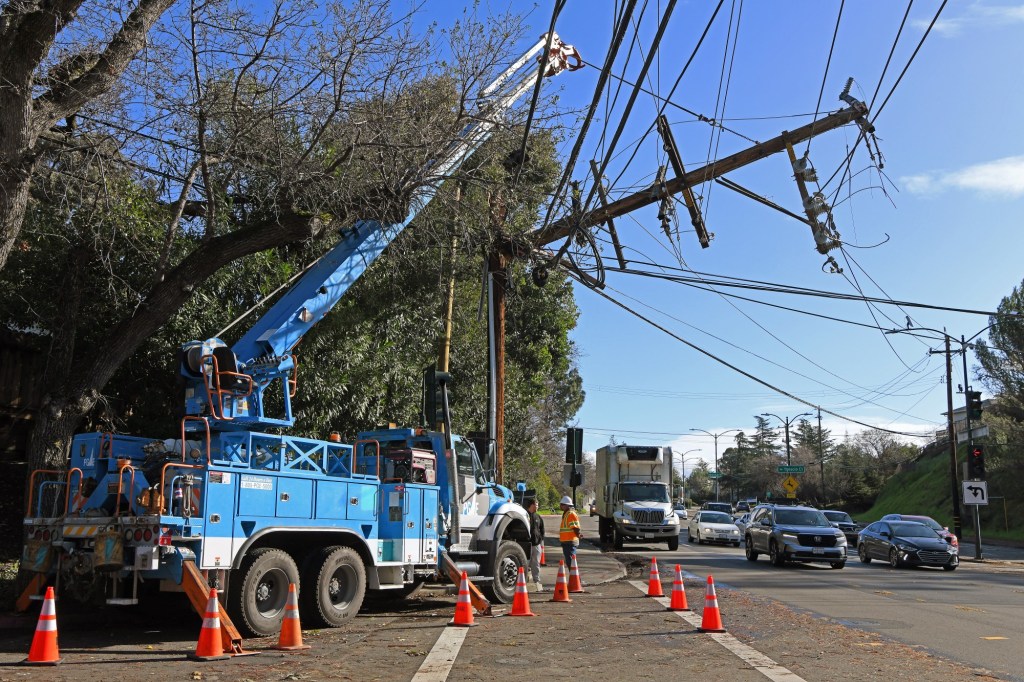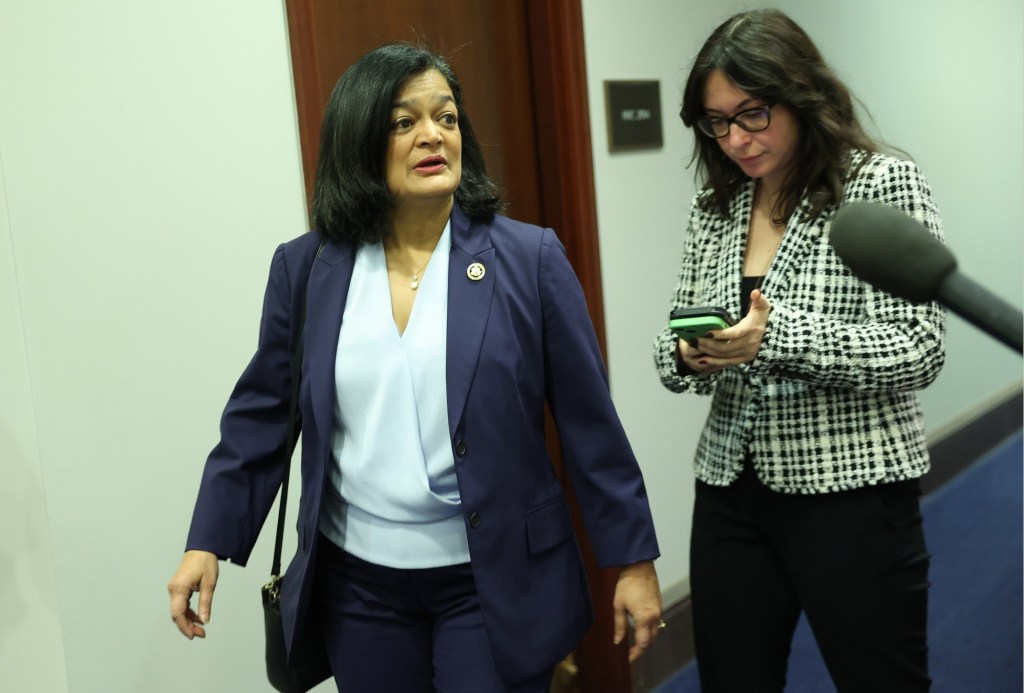A number of efforts are underway on either side of California’s political divide to short-circuit a legislative plan to impose income-based fees on clients of Southern California Edison and different utilities.
Each Democrats and Republicans within the state Legislature have crafted separate measures designed to squash a plan to implement a hard and fast utility cost primarily based on earnings that lawmakers unexpectedly accredited in 2022 in an 11-hour continuing after which signed by Gov. Gavin Newsom.
Additionally see: Electric bill based on income? Forget it, lawmakers of both parties agree
Southern California Edison, San Diego Gasoline & Electrical and PG&E would be capable to impose the brand new income-based utility cost on their clients if the state Public Utilities Fee offers the plan a last OK — doubtlessly by this July. Gov. Newsom appointed all 5 present members of the highly effective and unelected PUC.
The state lawmakers concerned within the numerous efforts to overturn the income-based utility cost plan embody Democratic Assemblymembers Jacqui Irwin and Marc Berman, and Republican senators Janet Nguyen, Kelly Seyarto, Rosilicie Ochoa Bogh, Scott Wilk, Brian Dahle, Shannon Grove and Roger Niello.
Associated: Middle or upper income? Brace for higher electric bills
A number of specialists led by Ahmad Faruqui, an economist who has consulted with all three of the utility behemoths concerned within the proposed mounted charge, have supplied an array of explanation why they imagine the state PUC ought to reject the present proposal.
“The proposed mounted prices are approach too excessive in comparison with the nationwide panorama,” Faruqui and the group of economists wrote. “The mounted prices will likely be burdensome for a lot of, infeasible to manage, are more likely to be challenged in court docket and are more likely to unleash adversarial unintended penalties, equivalent to penalizing clients who use vitality effectively and frugally.”
Earnings-based charge advocates, which embody The Utility Reform Community (TURN), and the Nationwide Sources Protection Council, argue that the scheme means higher-income clients will are likely to pay extra whereas lower-income clients can pay much less.
Proponents additionally declare that PG&E and the opposite utilities intend to decrease the kilowatt-hour charges that they cost clients as a option to offset the charges.
Even so, TURN and the environmental group concede that mounted charges are removed from an entire resolution.
“Regardless of our help for an (income-based charge), TURN and the Pure Resouces Protection Council acknowledge that the event of a progressive mounted cost doesn’t symbolize a silver bullet and won’t, by itself, make buyer payments reasonably priced,” the 2 teams wrote in a submitting with the state PUC.
The mounted charges would instantly make California, ominously, the house of the nation’s highest income-based mounted charges.
The nationwide common for such income-based charges is $11.15, in line with a report by EQ Analysis.
The three main California utilities will cost way more:
— Southern California Edison, $51.
— San Diego Gasoline & Electrical, $73.31.
— PG&E, $50.92.
State lawmakers are more and more alarmed in regards to the proposal.
“Too many Californians battle to afford their electrical energy payments at a time when vitality is already unreliable, and but the legislature thought it was a good suggestion to tear folks off extra,” state Sen. Wilk (R-Santa Clarita) mentioned in a ready launch this week.
The fixed-income proposal has surfaced at a time when PG&E payments, together with the payments charged by the opposite two utility titans, have skyrocketed.
“Our constituents have had sufficient and so have we,” mentioned Assemblymember Irwin (D-Thousand Oaks). “It’s time to place some reasoning again into how we cost for electrical energy in California.”
Among the many main issues that critics of the plan articulate: The state PUC must craft a system to investigate the earnings ranges of utility clients.
“Earnings information is confidential,” Faruqui and the opposite economists acknowledged within the submitting with the PUC. “Most clients wouldn’t like their earnings information to be found by a 3rd social gathering appearing on behalf of the utility.”
Makes an attempt to dive into earnings tax filings — usually the purvey primarily of the Inner Income Service and in California the state Franchise Tax Board — may unleash questions in regards to the constitutionality of such a process.
Loads of different problems loom, opponents of the plan word.
“Many houses within the state are owned by non-California residents who don’t report their earnings to the state franchise tax board,” Faruqui and the opposite economists wrote within the submitting. “Clients’ incomes differ over time. Incomes which might be reported on tax types are sometimes misguided and infrequently misreported. Moreover, the proposed process is cumbersome and topic to errors.”
Plus, in line with the economists, the IT departments of PG&E and its sibling utility monopolies may be poorly geared up to extract such data from their clients.
The brand new mounted cost would differ relying on the family earnings ranges of the respective clients. Right here’s how the mounted prices would work within the PG&E service territory, primarily based on a four-person family:
— Households incomes lower than $28,000 a 12 months would pay a hard and fast cost of $15 a month on their electrical payments.
— Households with annual earnings from $28,000 to $69,000 would pay $30 a month.
— Households incomes from $69,000 to $180,000 would pay $51 a month.
— These with incomes above $180,000 would pay $92 a month.
To offset the mounted month-to-month cost, there can be a 33% discount within the electrical energy charge used to calculate month-to-month prices, relying on how a lot electrical energy a buyer consumes in the course of the billing interval.
In the actual world, nonetheless, most clients would seemingly wind up paying extra, regardless of the assurances of the proponents of the unique end-of-session laws that’s now underneath hearth.
“If the excessive (income-based charges) proposed by the utilities are adopted, low customers within the middle-income brackets will see their payments go up,” the economists acknowledged of their submitting. “For instance, a PG&E buyer with a month-to-month invoice of $50 will see it go as much as $124. Clients with a month-to-month invoice of $100 can even see their payments go up. So will clients within the higher middle-income bracket whose payments are underneath $200 a month.”
The laws could, paradoxically, accomplish the alternative of its intention, the economists warned.
“In each earnings bracket, the upper the client’s utilization, the extra they may save,” the economists acknowledged within the submitting with the PUC. “In different phrases, low-use clients in every earnings bracket will see their payments go up and high-use clients will see their payments go down. Effectivity and frugality will likely be penalized. Inefficiency and waste will likely be rewarded.”
Source link









